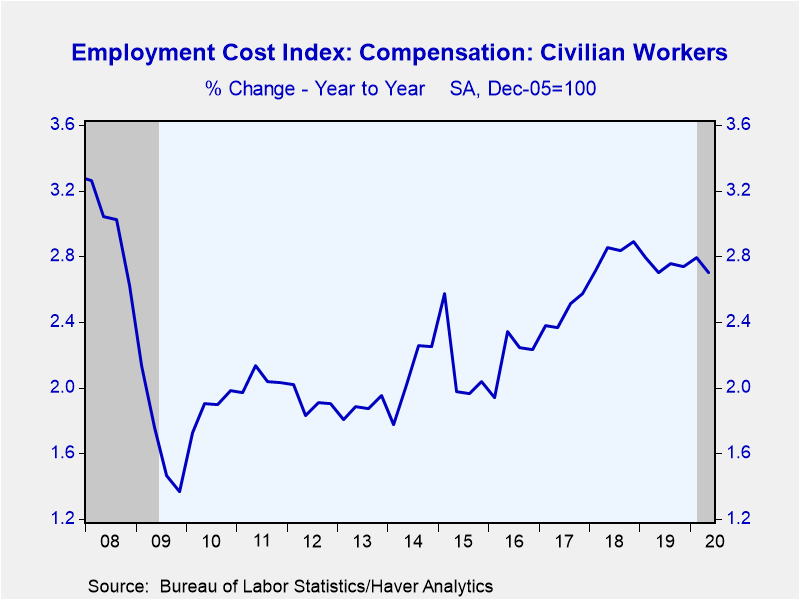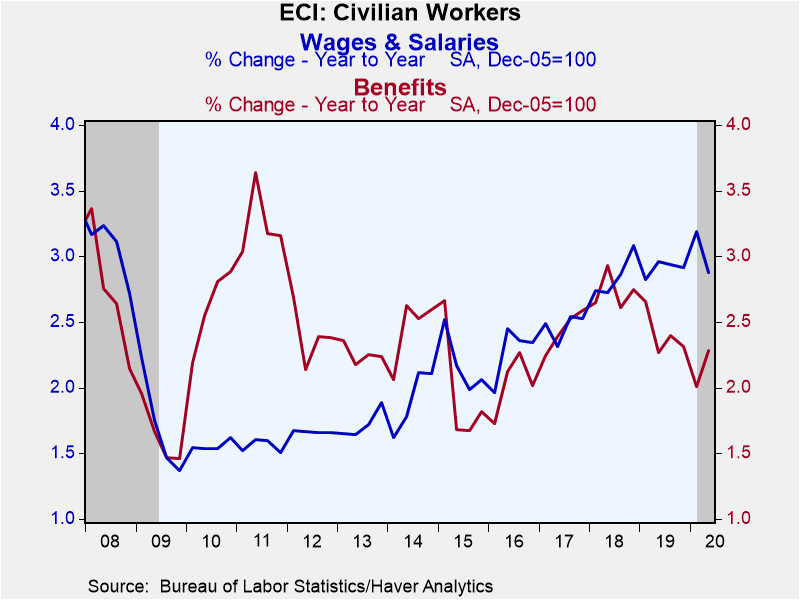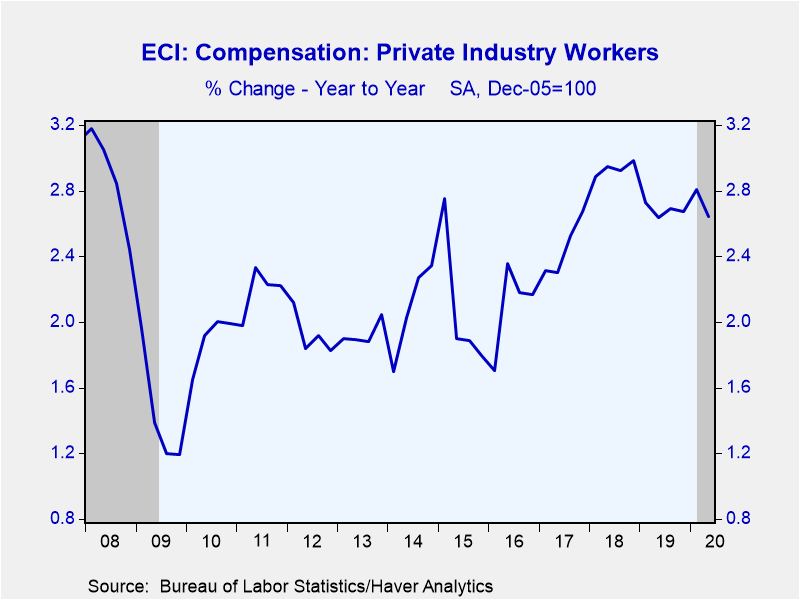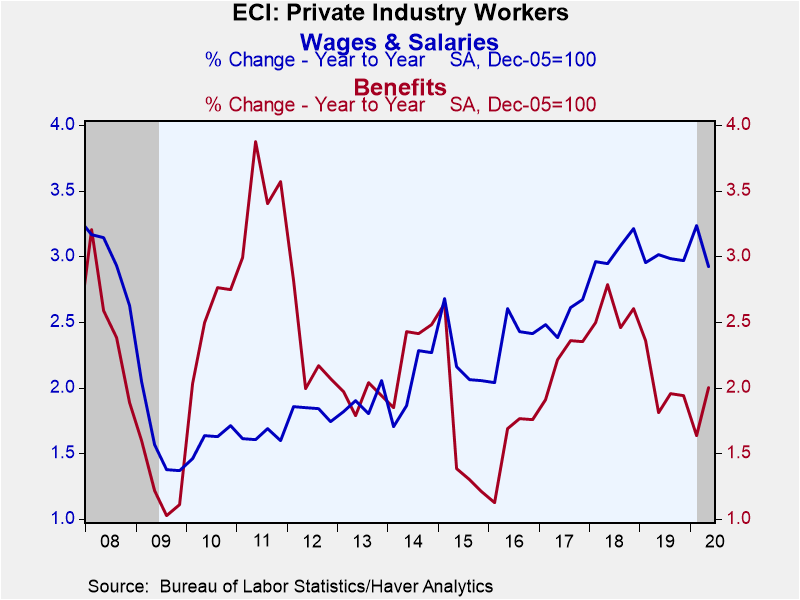 Global| Jul 31 2020
Global| Jul 31 2020Employment Cost Growth Slows in Q2
by:Sandy Batten
|in:Economy in Brief
Summary
• Growth of overall compensation slowed to 0.5% q/q in 2020 Q2, slightly below expectations. • Wages and salaries growth accounted for the slowdown while benefits picked up. The employment cost index (ECI) for civilian workers rose [...]
• Growth of overall compensation slowed to 0.5% q/q in 2020 Q2, slightly below expectations.
• Wages and salaries growth accounted for the slowdown while benefits picked up.
The employment cost index (ECI) for civilian workers rose 0.5% in the second quarter of 2020, down from a 0.8% q/q rise in the first quarter. This was slightly below the Action Economics Forecast Survey's expectation of a 0.6% q/q increase. Year-on-year growth of total compensation also slowed slightly to 2.7% in Q2 from 2.8% y/y in Q1. Annual compensation growth hit a cycle high of 2.9% in Q4 2018.
Wage and salaries growth slowed markedly in Q2 with wages and salaries rising 0.4% q/q versus a 0.9% q/q jump in Q1. Year-on-year growth also slowed meaningfully to 2.9% in Q2 from 3.2% in Q1, which was the fastest annual pace of wage and salary growth since Q2 2008. In contrast, benefits growth picked up to 0.8% q/q in Q2 from 0.4% in Q1 with the y/y rate rising to 2.3% from 2.0%. The year-on-year gain in Q2 was the strongest since Q2 2018.
Private-sector figures echoed the overall figures. Compensation growth slowed to 0.4% q/q in Q2 from 0.8% in Q1 with the y/y rate falling to 2.6% from 2.8%. Again, the slowdown was due to slower wage and salary growth with private wages and salaries rising 0.4% q/q (2.9% y/y) versus a 1.0% q/q jump in Q1. In contrast, benefits increased 0.7% q/q in Q2 (2.0% y/y), up sharply from the 0.2% q/q rise in Q1. Employer costs for health benefits gained 1.9% y/y in Q2, up from 1.5% y/y in Q1. Compensation in goods-producing industries increased 0.7% q/q in Q2, up from a 0.5% q/q gain in Q1, while compensation in service-providing industries slowed considerably to 0.4% q/q in Q2 from 0.9% q/q in Q1. The Q2 rise in service-sector compensation was the softest since Q2 2015.
The employment cost index, which measures the change in the cost of labor, free from the influence of employment shifts among occupations and industries, is available in Haver's USECON database. Consensus estimates from the Action Economics survey are in Haver's AS1REPNA database.
Sandy Batten
AuthorMore in Author Profile »Sandy Batten has more than 30 years of experience analyzing industrial economies and financial markets and a wide range of experience across the financial services sector, government, and academia. Before joining Haver Analytics, Sandy was a Vice President and Senior Economist at Citibank; Senior Credit Market Analyst at CDC Investment Management, Managing Director at Bear Stearns, and Executive Director at JPMorgan. In 2008, Sandy was named the most accurate US forecaster by the National Association for Business Economics. He is a member of the New York Forecasters Club, NABE, and the American Economic Association. Prior to his time in the financial services sector, Sandy was a Research Officer at the Federal Reserve Bank of St. Louis, Senior Staff Economist on the President’s Council of Economic Advisors, Deputy Assistant Secretary for Economic Policy at the US Treasury, and Economist at the International Monetary Fund. Sandy has taught economics at St. Louis University, Denison University, and Muskingun College. He has published numerous peer-reviewed articles in a wide range of academic publications. He has a B.A. in economics from the University of Richmond and a M.A. and Ph.D. in economics from The Ohio State University.










